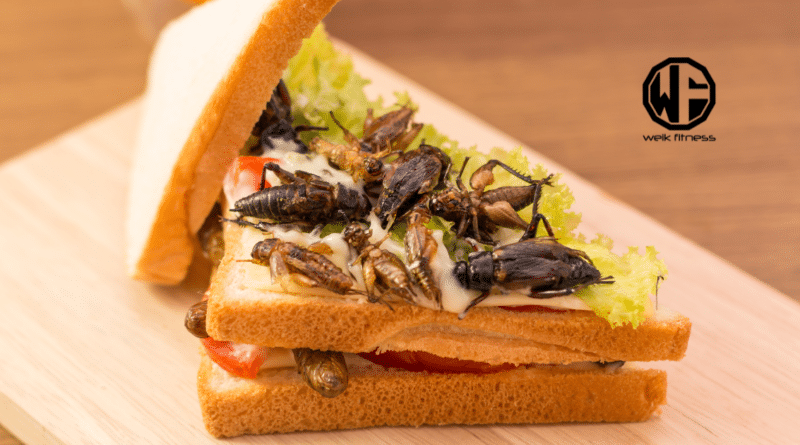Does It “Bug” You That Insect Ingredients Are in Your Foods?
I don’t know about you, but I don’t wake up in the morning looking for a bowl of insect ingredients. Can I offer you a bowl of Captain Cricket? Captain Crunch was deemed unhealthy, so we’ve replaced all the ingredients with insects. If that sounds disgusting to you, it’s not only a current reality in some products today, but many believe insects are the “food of the future.”
While some are out there shouting from the hilltop that bugs are a viable and sustainable food source, you still haven’t convinced me that eating bugs is something we should all be doing.
While America is full of soy latte-sipping beta males, I’m not one of them. I eat MEAT. I’m not a bird. I’m not about to eat crickets, mealworms, or any other insect ingredients. There’s no way that’s going to happen, nor will I feed my family insects, insect ingredients, insect parts, insect powder, or anything that is considered a bug or insect. But you do you, boo.
There are manufacturers out there that have adopted insect ingredients and are now slipping them into some of the common foods we are all used to eating. What’s disturbing is the fact that they are doing this behind your back and not disclosing the information – basically hoping you never look at the ingredient list (which most people never do).
Related Article: The Grayl GeoPress — Press, Purify, & Prevail in Emergencies
In this article, we are going to take a deeper dive into the topic of insect ingredients and why, personally, you’re not going to find me chewing on crickets. You have much to learn, grasshopper. Let’s dive into it!
Disclaimer: This article is for informational purposes only and is not meant to treat or diagnose any condition. It is recommended that you speak with your doctor before starting any exercise program, changing your daily nutrition, or adding any supplements to your regimen.
Table of contents
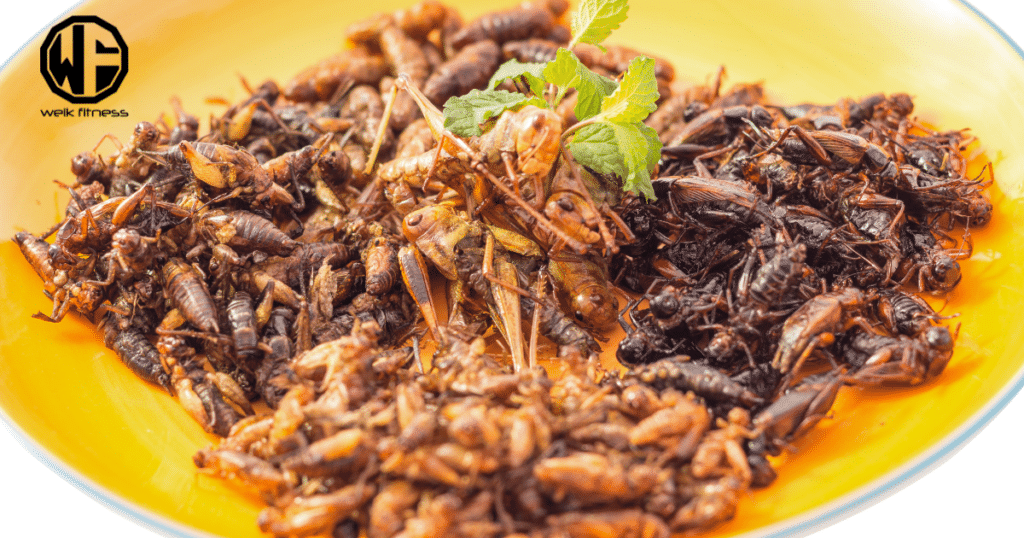
The Rise of Insect Ingredients
If you were to tell me 10 years ago that we would all be eating bugs, I would be on the floor laughing with tears running down my face and a side stitch that would cripple a buffalo. That’s a hilarious and disgusting thought, right? But not so fast…
For those who are just stopping by to read this article, I thank you for being here. For those of you who have been along with me for this long ride as a writer in the industry, you’re the real OGs, know I speak my mind, and understand that when you’re reading my content, I’m an open book and never hold back.
No matter if you’re new or old to my content, this isn’t the first time I’ve tipped you all off on the thought of insect ingredients.
In fact, back on May 2, 2017, I published an article on IronMagazine.com explaining this is in the pipeline with insect-based proteins. Unfortunately, no one wanted to believe me and dismissed the entire notion and article.
The above is probably a shock to you, and if you’re like me, you’re currently trying to hold back dry-heaving at the thought of insect ingredients in your food.
As it stands right now, without you knowing it, you’re probably consuming crickets, mealworms, grasshoppers, and even more nasty bugs that I’ll refrain from mentioning to preserve what appetite you may actually have left.
The truth is there are over 2,000 insect species that are considered edible, and nearly 400 edible-insect-related businesses in operation globally.
The fact that the food industry is moving in this direction is quite concerning, in my opinion. This shift towards alternative protein sources is driven by concerns over sustainability, health, and environmental impact. Back in 2012, there were zero insect farms in the US. Fast forward to 2018 and the US shifted to 18 insect farms. Odd, right?
Related Article: The Best Plant-Based Protein on Amazon [2024 Top 10 Edition]
They are predicting that the market for insect ingredients and overall edible insects will grow into a $4.6 billion industry by 2027.
Insect ingredients have somehow won the lottery on the food source of the future. Manufacturers and researchers are saying insects and bugs offer a rich source of protein, vitamins, and minerals. From cricket flour to mealworm snacks, products incorporating insect ingredients have made their way to supermarket shelves and restaurant menus worldwide.
Personally, I don’t live in the wild. I don’t wake up wondering where my meals are coming from, and you can be certain that bugs and insect ingredients are not on my list of things I’m thinking about eating (ever).
But let’s hear “their” side of the story.
Why Manufacturers Are Embracing Bug Ingredients
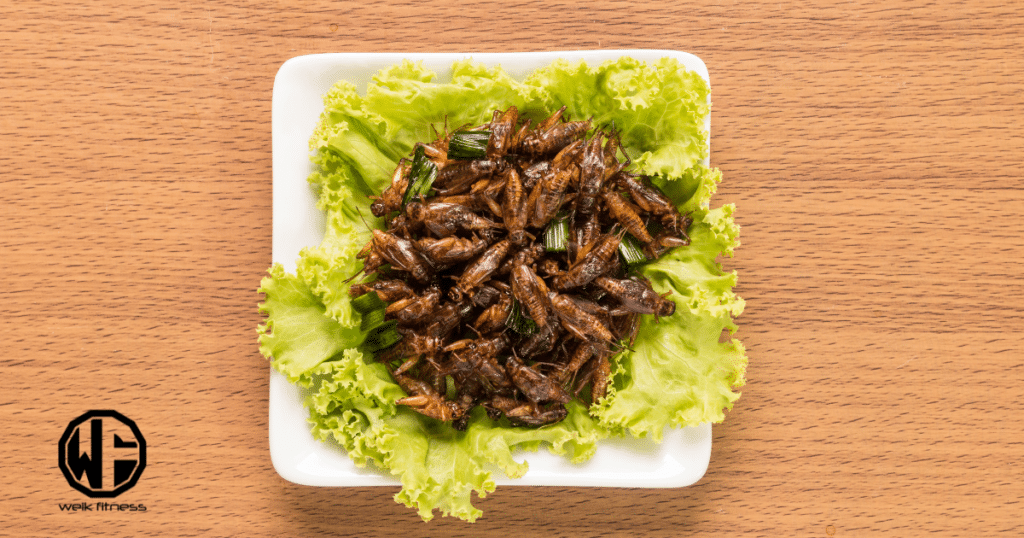
You would assume that manufacturers would have some good reasons for using insect ingredients, right? So, let’s hear them out even though most of us already have our minds made up.
- Nutritional Benefits: Insects are highly nutritious, boasting an impressive nutritional profile that rivals conventional protein sources such as beef, chicken, and fish. They are rich in protein, essential amino acids, healthy fats, vitamins (including B vitamins), and minerals like iron and calcium. Incorporating insect ingredients allows manufacturers to produce nutrient-dense foods that cater to consumers’ growing demand for healthier options.
- Sustainability: Compared to traditional livestock farming, insect farming requires significantly fewer resources such as water, land, and feed. Insects are highly efficient converters of feed into protein, requiring less feed per unit of protein produced compared to livestock like cattle or poultry. Additionally, they produce fewer greenhouse gas emissions and generate less waste, making them a more environmentally sustainable protein source.
- Cultural Acceptance: In many cultures around the world, insects have long been consumed as a dietary staple. By incorporating insect ingredients into mainstream food products, manufacturers can tap into this cultural acceptance and introduce consumers to novel, yet familiar, food options. This cultural normalization plays a crucial role in overcoming the “ick” factor often associated with entomophagy (the practice of eating insects).
- Innovation and Differentiation: Insect ingredients provide food manufacturers with an opportunity to differentiate their products in a crowded market. By embracing innovative ingredients, companies can attract adventurous consumers seeking unique culinary experiences while aligning with broader trends favoring sustainability and ethical consumption.
There is a list of insect ingredients that I found on NewProtein.net that calls out some of the ingredients you will find in your food now, or in the very near future. If I were you, I would look at the ingredients of the foods you grab off the grocery store shelves and see if you find any of these ingredients listed. If so, you’re eating bugs.
Here are some insect ingredients to look out for in your foods:
- Whole and ground lesser mealworm (Alphitobius diaperinus)
- Dried crickets (Gryllodes sigillatus)
- Dried mealworms (Tenebrio molitor)
- Whole and ground mealworms (Tenebrio molitor)
- Whole and ground Grasshoppers (Locusta migratoria)
- Whole and ground crickets (Acheta domesticus)
You should also look for bug ingredients in the form of added colors, such as:
- Carmine
- Cochineal extract
Also, if you see acheta powder in any of your products, congrats, you’re consuming cricket powder.
What Foods May Contain Insect Ingredients?
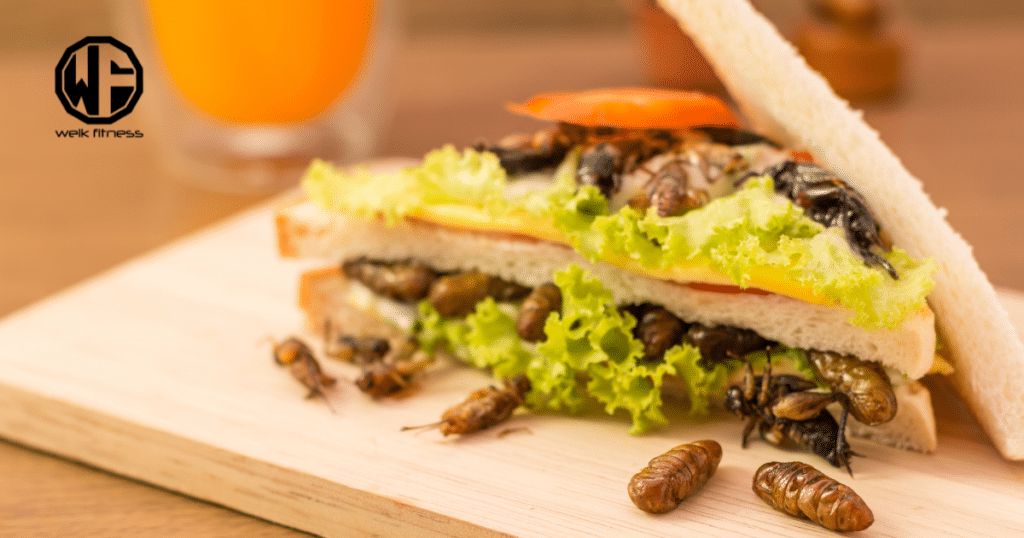
Some of the commonly consumed foods (and beverages) that may now or in the near future include insect ingredients are:
- Protein powder
- Energy bars
- Snacks
- Cookies
- Pasta
- Burgers
- Flour
- Granola
- Sausages
- Bread
- Crackers
- Falafel
- Beer
- Milk
- Candy
- Lollies
- Chocolates
- Ice Creams
- Butter
- Oils
- Pesto
- Spices
- Seasonings
You can literally go on Amazon right this second and buy a bunch of different foods that include bugs and insects. For instance, check out this list:
- Erbies Edible Bug Mixed Trail Mix
- Crick-ettes Sampler Gift Pack
- Larvets Sample Gift Pack
- Don Bugito Insect Protein Snacks
- EcoEat Seasoned Crickets
- Yerbero Toasted Grasshoppers
The Potential Drawbacks of Insect Ingredients
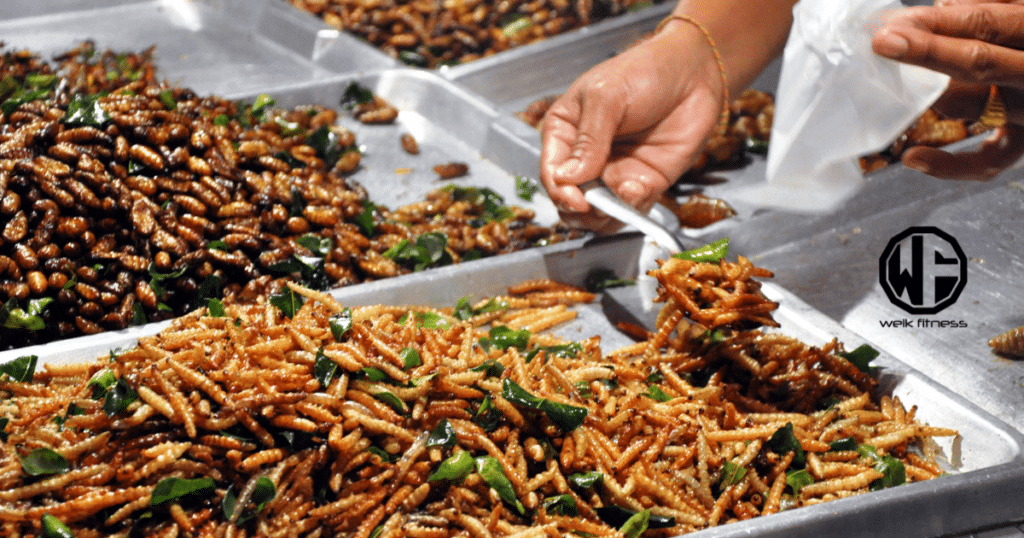
While the adoption of insect ingredients offers numerous benefits in the eyes of researchers, it also raises valid concerns and potential drawbacks that warrant careful consideration. Some of the things to be concerned about include:
- Allergen Risk: Individuals with shellfish allergies may also be allergic to insects, as they belong to the same biological group. Manufacturers must clearly label products containing insect ingredients to prevent allergic reactions and ensure consumer safety.
- Ethical Concerns: While insects are often touted as a more ethical protein source than conventional livestock due to their lower environmental impact and perceived lack of sentience, ethical considerations still arise. Some argue that farming insects for human consumption may raise welfare concerns, particularly regarding their living conditions and slaughter methods. Ethical farming practices and humane treatment of insects are essential considerations for ensuring the ethical integrity of insect-based products.
- Regulatory Challenges: The regulatory landscape surrounding insect ingredients varies across jurisdictions, with some regions lacking clear guidelines or approval processes for their use in food products. Manufacturers must navigate these regulatory complexities to ensure compliance with food safety standards and labeling requirements, which can pose challenges to market entry and product development.
- Cultural Resistance: Despite the long history of insect consumption in many cultures, Western societies often exhibit cultural resistance to the idea of eating insects. Overcoming entrenched cultural attitudes and perceptions requires targeted education and marketing efforts to familiarize consumers with the benefits of insect-based foods and dispel misconceptions surrounding their consumption.
- Quality and Taste: While insects offer nutritional benefits, their taste and texture may not appeal to all consumers. Product developers must carefully balance the inclusion of insect ingredients with other flavor-enhancing components to create palatable food products that satisfy consumer preferences.
My Final Thoughts on Bug Ingredients

Look, if you want to eat bug ingredients or insect ingredients, be my guest. Me, there’s no way you’re ever going to see me warming up to this idea. This isn’t an episode of Naked and Afraid, Survivor, or Fear Factor with Joe Rogan (I sort of miss that show) — I’m not about to be eating bugs.
It’s almost as if the “powers that be” are all getting together for a night of drinks, laughing, having a good time, and saying, “What stupid sh*t can we have these morons do next?” And you all fall in line like the group of good, obedient sheep you are.
We’ve been through so much between the “virus” that was spreading across the globe, to food shortages throughout the US — you can’t help but question if much of this is by design.
Here’s a clue about what I’m saying… There is research that specifically calls out the fact that during “the virus,” we had food shortages and that insects could have fixed the issue. Honestly, food shortages were by design, in my opinion. That same research is touting edible bugs and insect ingredients as being a “valuable protein source.”
Do you think Arnold Schwarzenegger, back in his heyday winning Mr. Olympia competitions, would have been seen eating bugs and insect ingredients? I mean, he made the joke in Pumping Iron that “Milk is for babies, when you grow up you have to drink beer.” What do you think his stance would have been on insect ingredients as his go-to protein source?
You can call me a tinfoil hat conspiracy theorist; I’m cool with that. But as we all know, those conspiracy theorists the past several years may have seemed off their rocker at the time, but months and years down the road we find out they were right all along.
As much as I’d like to think it’s not, trying to get us to eat bug ingredients and insect ingredients almost seems like it’s by design.

When you have chicken farms, food manufacturing facilities, and other key pieces of agriculture going up in flame by “random fires,” you need to start asking yourself if that seems normal.
Do you want even more information that should frighten you about what the future holds?
Tyson Foods, in 2023, partnered with an insect protein startup (Protix). Why, you may ask? John Tyson, the company CFO, mentions, “The insect lifecycle provides the opportunity for full circularity within our value chain, strengthening our commitment to building a more sustainable food system for the future.” Now, he was saying that in the context that it is supposed to be used to feed animals and not humans, but I think we all know where this is heading.
But wait… there’s more! PepsiCo said way back in 2017 that they were looking into insect ingredients. Unfortunately, no one was paying attention, and at that point, no one thought they were truly being serious. Well, they are! They want in and have said, “The Doritos and Cheetos maker is capitalizing on the growing insect and plant-based protein trend and has called for novel protein ideas to use in its snacks.”
So, to close this out… I’m a fan of “your body, your choice.” If you want to eat insect ingredients, go for it. Me, I’ll do whatever I have to in order to not find myself going that route. I’m not going to participate in your new normal. Ever.


*Disclosure: This article may contain affiliate links or ads, which means we earn a small commission at no extra cost to you if you make a purchase through these links. These commissions help support the operation and maintenance of our website, allowing us to continue producing free valuable content. Your support is genuinely appreciated, whether you choose to use our links or not. Thank you for being a part of our community and enjoying our content.
PLEASE CONSIDER SHARING THIS ON YOUR SOCIAL MEDIA TO HELP OTHERS LEARN MORE ABOUT THIS TOPIC. SIMPLY CLICK BELOW!

